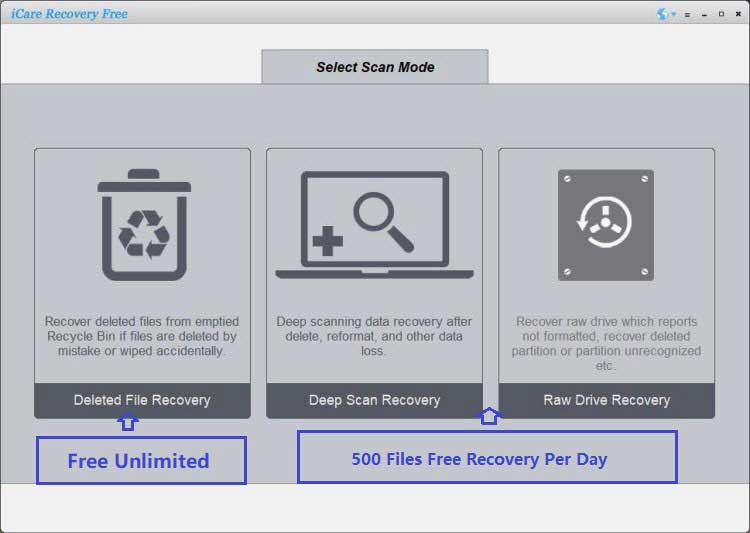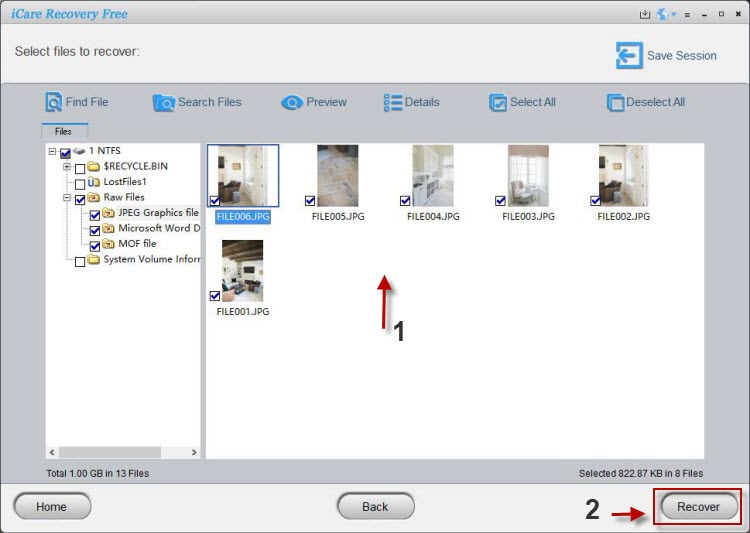Sandisk Micro SD Card RAW ⚠️
Overview: If your Sandisk micro SD card is RAW, the file system is corrupted and unreadable. You can recover data quickly using iCare Recovery before formatting. If you do not have important files, directly format it would usually generate a working Sandisk microSD card.
Understanding Sandisk Micro SD Card RAW Issues
The Sandisk micro SD card RAW error occurs when the card's file system is corrupted 🔧. This makes the card inaccessible, and your data cannot be read normally. Common causes include:
- Improper ejection of the card ⚠️
- Virus or malware attacks 💀
- Physical or hardware damage 💥
- Sudden power loss during data transfer
Signs Your Sandisk Micro SD Card Has Turned RAW ⚠️
- The card shows RAW in Windows Explorer or Mac Finder
- Error messages like "The disk is not formatted"
- Files become invisible or inaccessible
- Device prompts you to format before use
How to Fix Sandisk Micro SD Card RAW File System 💻
Follow these steps to safely repair your RAW micro SD card without losing data:
| Step | Action | Purpose |
|---|---|---|
| 1 | Check Disk Management | Verify the card status before attempting recovery, you can try asign a different drive letter to the Sandisk sd card to see any luck |
| 2 | Run CHKDSK: chkdsk X: /f |
Attempt to repair the file system ✅ |
| 3 | Recover files using iCare Recovery | Safely restore lost files before formatting |
| 4 | Format the card to FAT32/exFAT | Make the SD card reusable |
How to Use iCare Recovery to Recover Data from RAW Sandisk Micro SD 💾
If your Sandisk micro SD card is RAW, follow these steps to recover your files safely:
 Download and Install iCare Recovery: Get the software and install it on your computer. Please do not download nor install the software on the SD CARD to avoid data overwriting. Download and install it on your computer hard drive.
Download and Install iCare Recovery: Get the software and install it on your computer. Please do not download nor install the software on the SD CARD to avoid data overwriting. Download and install it on your computer hard drive.- Connect the RAW SD Card: Insert your Sandisk micro SD card into your computer using a card reader.
- Launch iCare Recovery: Open the software and select "Deep Scan Recovery" or RAW DRIVE RECOVERY for RAW file system recovery.

- Select the RAW SD Card: Choose your micro SD card from the detected drives list.
- Scan the Card: Click "Scan" to search for lost files. iCare Recovery will detect recoverable photos, videos, and documents.
- Preview and Select Files: After scanning, preview the files and select those you want to recover.

- Recover Files: Click "Recover" and save files to your computer (not the RAW SD card).
- Format the SD Card: Once files are recovered, format the card to FAT32 or exFAT to reuse.
✅ Following these steps ensures your data is safely recovered without loss.
Also read: RAW SD card recovery or Sandisk sd card recovery
RAW vs Normal SD Card Comparison ⚖️
| Feature | Normal SD Card | RAW SD Card |
|---|---|---|
| File System | FAT32/exFAT/NTFS | Corrupted / Unrecognized |
| Access | Readable | Inaccessible ⚠️ |
| Error | None | "Disk not formatted" |
| Recovery | Optional | Required (iCare Recovery 💾) |
Introducing iCare Recovery 🔹 Free Tool
iCare Recovery is a free and reliable tool for recovering files from RAW micro SD cards. Key benefits include:
- Supports RAW, FAT32, exFAT, NTFS file systems
- Recovers photos, videos, documents, and more 💾
- Step-by-step interface for beginners 👨💻
- Free version for basic recovery; paid version adds advanced features
How to Format Sandisk Micro SD Card After Recovery 🛠️
Once you have successfully recovered your files using iCare Recovery, you should format your RAW or corrupted Sandisk micro SD card to make it usable again. Follow these steps carefully:
- Backup Important Data: Ensure all recovered files are safely saved to your computer.
- Insert the SD Card: Connect your Sandisk micro SD card to the computer via a card reader.
- Open Disk Management (Windows): Press Win + X → select Disk Management.
- Locate Your SD Card: Right-click on the SD card partition showing as RAW or unallocated.
- Select Format: Choose FAT32 (for cards ≤32GB) or exFAT (for cards >32GB) as the file system.
- Set Volume Label: Optionally, name your card for easy identification.
- Quick Format: Check “Perform a quick format” and click OK to start formatting.
- Wait for Completion: Once formatted, your Sandisk micro SD card will be fully accessible and ready for reuse ✅.
⚠️ Important: Formatting will erase all data on the Sandisk micro SD card. Make sure you have successfully recovered every important file using iCare Recovery before proceeding. Additionally, please note that if the micro SD card is physically damaged — for example, due to broken connectors, water damage, or internal hardware failure — formatting will not fix it. In such cases, the card may remain unreadable or unusable, and no software, including iCare Recovery, can repair physical damage. Always handle your SD cards carefully to prevent data loss and consider replacing damaged cards immediately to avoid future issues.
FAQ ❓
What does 'Sandisk micro SD card RAW' mean?
RAW SD card means the file system is corrupted and unreadable. Files cannot be accessed until repaired.
How can I fix a Sandisk micro SD card showing RAW?
Use Disk Management, CHKDSK, or iCare Recovery to repair the card and recover your files safely.
Can I recover files from a RAW Sandisk micro SD card for free?
Yes, the free version of iCare Recovery can scan and restore files from a RAW SD card without formatting.
Why does my Sandisk SD card show RAW?
File system corruption, virus attacks, improper ejection, or hardware failure can make your SD card RAW ⚠️.
Can I fix RAW SD card without losing data?
Yes, recover your files first using iCare Recovery, then format the SD card safely.
Is iCare Recovery free to use?
Yes, the free version allows basic recovery from RAW SD cards. Advanced features are in the paid version.
Related Guides 🔗
